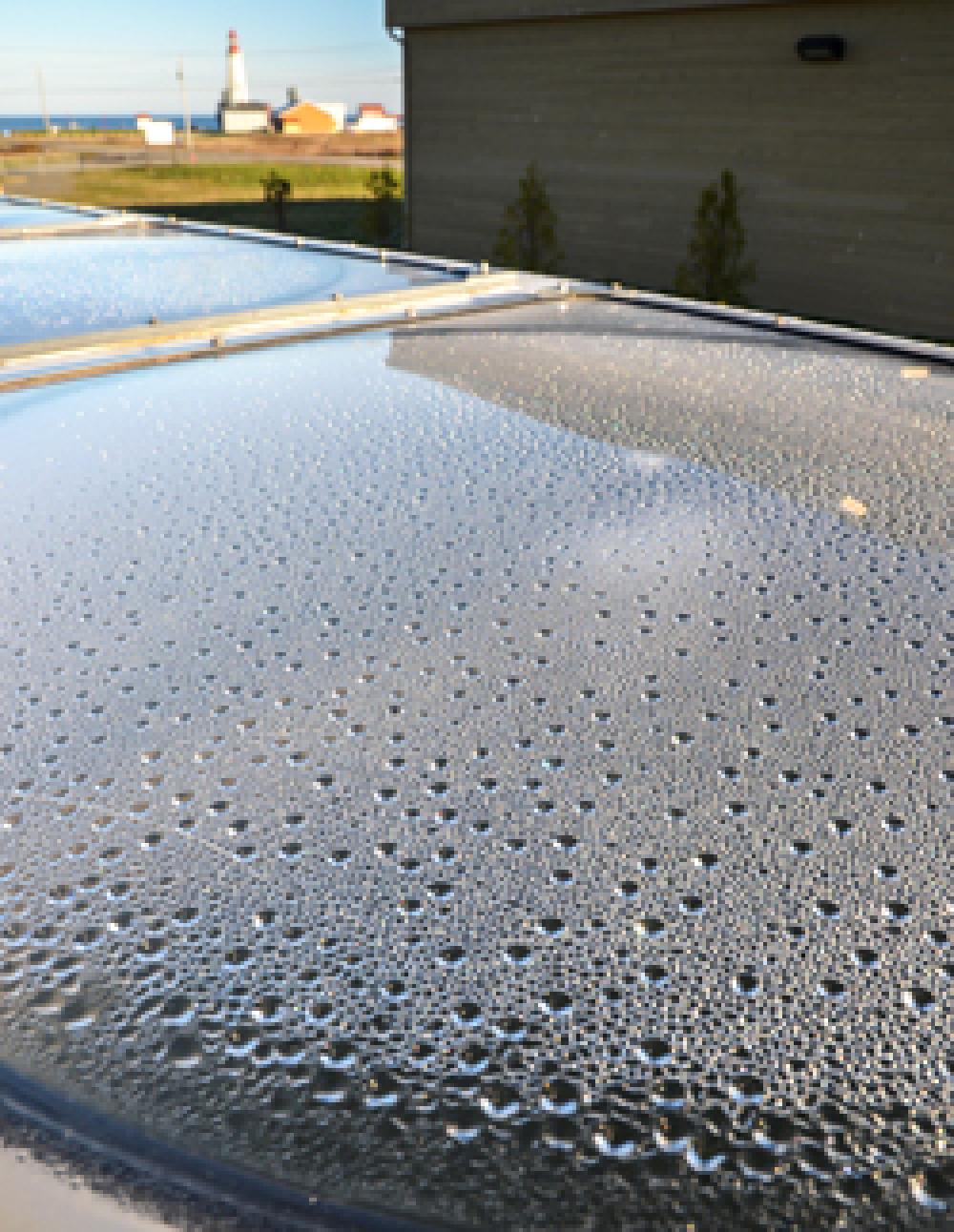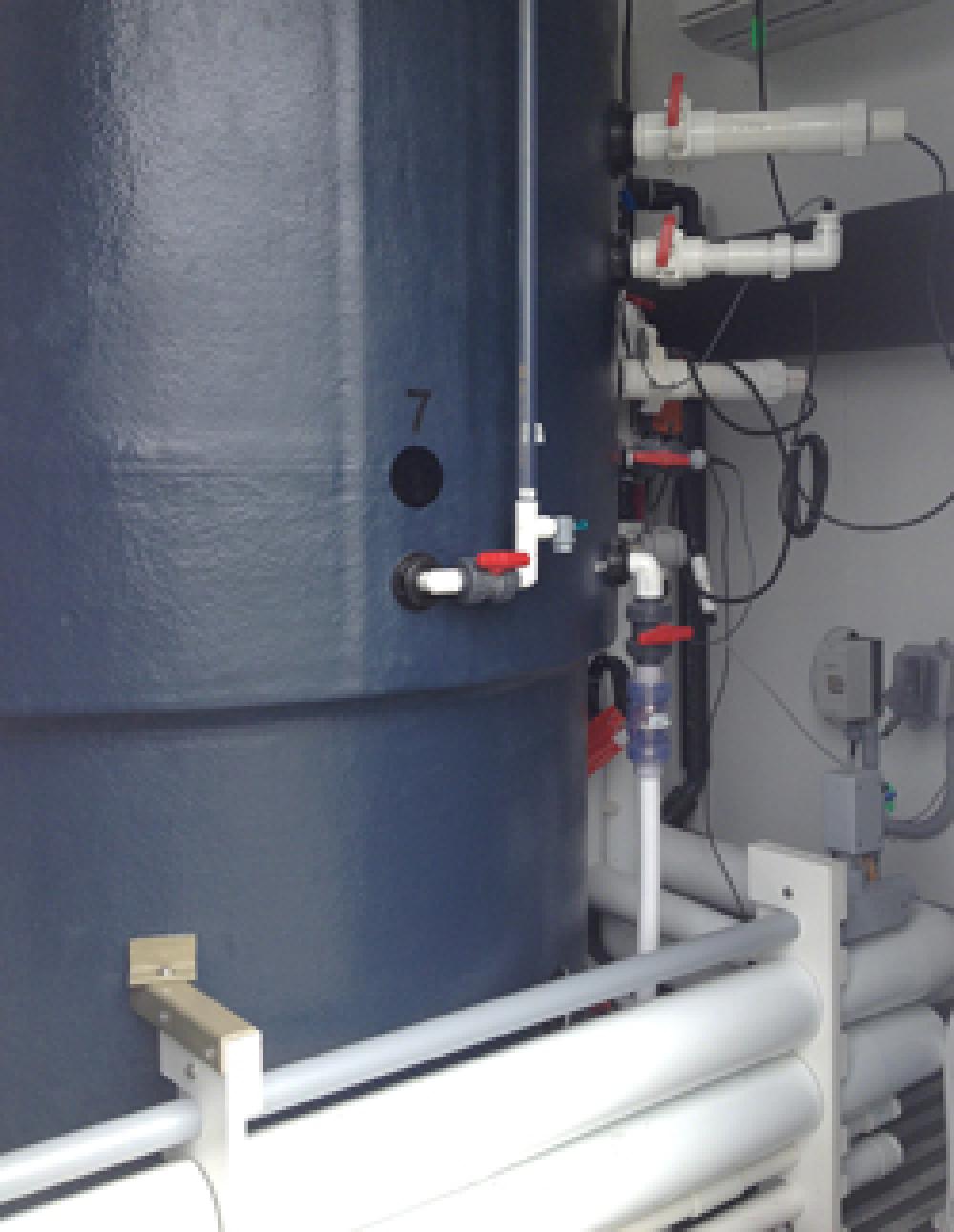
Scientists Collaborate on Ocean Acidification Research
In September-October 2014, four scientists from the Maurice Lamontagne Institute, Fisheries and Oceans Canada, took part in a major investigation of the effects of ocean acidification on phytoplankton, the microscopic single-celled plants at the base of the marine food web. The Department team joined a group of scientists and students from the Institut des sciences de la mer de Rimouski (ISMER), Laval University, the Institut national de recherche scientifique – eau, terre, environnement (INRS-ETE), and McGill University, under the umbrella of the inter-institutional research organization Québec-Océan and financed by the Fonds de recherche du Québec - nature et technologies (FRQNT) and Fisheries and Oceans Canada.
At the ISMER research station in Pointe-au-Père, 12 large tanks called mesocosms were filled with seawater from the St. Lawrence Estuary, adjusted to cover a range of pH and incubated under natural daylight at two different temperatures. Over a period of three weeks, the researchers followed the growth of the phytoplankton population in the mesocosms, measuring the abundance of the various species, photosynthetic rates, chlorophyll production, nutrient consumption, the production of various organic compounds including trace gases, bacterial growth rates, and viral abundances, among other parameters.
A troubling issue
Understanding the effects of ocean acidification on marine organisms is currently a hot topic in ocean science. Often referred to as “the other CO2 problem,” ocean acidification has recently been recognized as a potentially important environmental problem related to anthropogenic climate change.
Since the beginning of the industrial era, the oceans have absorbed approximately one third of the carbon dioxide (CO2) emitted to the atmosphere by the combustion of fossil fuels. As it dissolves in water, CO2 produces carbonic acid which lowers the pH of the seawater, making it more acidic (lower pH values indicate higher acidity). The oceans are now 30% more acidic than before the industrial era. If “business as usual” fossil fuel consumption continues, ocean acidity could increase by 100% by the end of this century. Changes of this magnitude and rapidity are unprecedented in at least the past 20 million years, raising serious concerns about the ability of the marine ecosystems to adapt.
The effects of acidification on marine organisms are multi-faceted, but will particularly affect those species which produce shells or skeletons containing calcium carbonate. This includes corals, shelled molluscs, many crustaceans, and numerous species of plankton. Calcium carbonate levels are reduced at lower pH, so ocean acidification will make it more difficult for many species to grow and reproduce normally.
The full implications of ocean acidification for phytoplankton growth in the natural environment are still unclear, and the results of this experiment and others from around the world are being closely studied. It is still not known to what extent phytoplankton may be able to adapt to acidification over the long term, and additional research on this question will need to be done in the next few years before the full impact of ocean acidification can be known.
Michael Scarratt
Science



The ISMER mesocosm facility, showing the transparent roof, and internal sampling ports.





